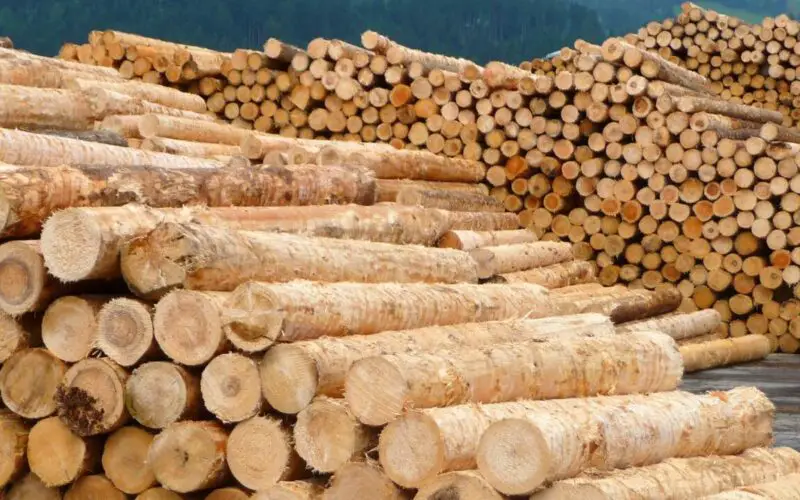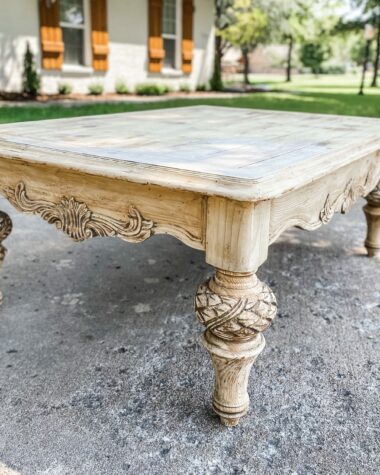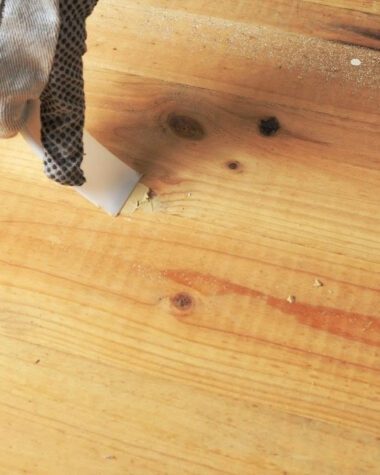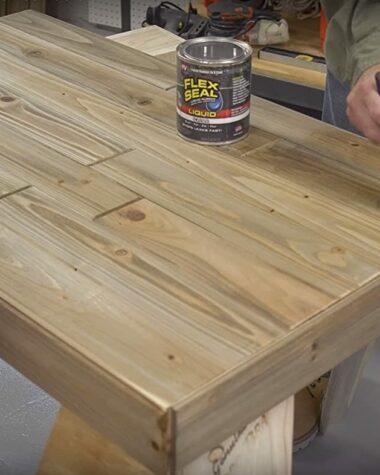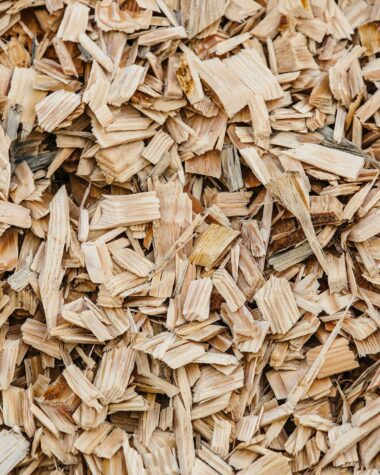Woods are naturally hygroscopic, which means they gain moisture from the environment and then release it into the atmosphere. The natural moisture content of a wood can greatly affect its strength. For instance, green woods usually have over 60 percent to 120 percent of moisture content. Such a high moisture level in a wood equates to its weakness, and it will tend to crack, warp and shrink. For this reason, wood drying is important to prevent further damage to wood.
What are Acceptable Moisture Levels in Wood?
The recommended moisture level of wood for interior wood is 6% to 8%, whereas for exterior wood, 9% to 14%. For construction purposes, wood moisture content should range from 9% to 14%. The given desirable moisture content is based on two factors:
- The final use of the wood
- The average relative humidity (RH) of the environment
Everyone working with wood should know the moisture content (MC). As mentioned, woods are hygroscopic with the ability to gain or lose water as the air’s relative humidity (RH) in the surroundings changes. These different humidity levels in the air mean that wood not only gains and loses moisture but also expands and shrinks.
As the humidity drops, the MC drops, and the wood shrinks. As the humidity increases, the MC increases, and the wood expands. When wood neither gains nor loses moisture, it is said to have reached its equilibrium moisture content (EMC). Equilibrium moisture content is the point at which a hygroscopic material such as wood no longer absorbs or releases moisture because it has reached a balance with its environment.
According to Eugene Wengert, a woodworking expert, and professor at the University of Wisconsin-Madison Department of Forestry, wood should be dried to an MC of water within two percentage points of the EMC in which the wood is used. The chart below will make things clearer about the information mentioned.
| Humidity of the in-use location | EMC of the in-use location | Corresponding MC the wood will attain at this location |
|---|---|---|
| 19-25% | 5% | 5% |
| 26-32% | 6% | 6% |
| 33-39% | 7% | 7% |
| 40-46% | 8% | 8% |
| 47-52% | 9% | 9% |
Note that the EMC of the in-use location is equal to the corresponding MC that wood will absorb. Therefore, locations where the relative humidity inside the house or office is between 26% and 32% should be at 6% for both the EMC of the location and the moisture content of the wood. It means that wood intended for indoor use at this location must be dried to about 6% and maintain its moisture content before and during the manufacturing process.
Fortunately, there are numerous Android applications that measure the humidity of the environment. These applications make the user determine if the area is appropriate so that the wood quality will not be compromised.
How To Remove Moisture From Wood
The wood must be thoroughly dried to increase its strength of the wood and prevent mold growth from moisture trapped in the grain. When it comes to wood drying, there are three viable general options that wood enthusiasts may consider: air drying, kiln drying, and shed drying.
Air Drying
This wood-drying method exposes the woods to direct sunlight and natural wind. The drying process involves stacking the wood on a sticker so that the sunlight and wind will pass through it. However, this method has some drawbacks.
- Slow drying due to low airflow or high humidity can cause wood stains.
- Rapid drying is caused by excessive airflow resulting in cracks and tears.
Kiln Drying
Kilns are closed compartments where air circulation, temperature, and relative humidity may be managed such that the moisture content of the wood is dropped to a specified point where there are no drying defects. To do this method, one should know the fundamental aspects of kiln drying.
While kiln drying is successful, the expense of installing and maintaining the kilns may be the prohibitive reason, except if the throughput of the timber is large. If the value of particular species of green timber is high enough, it becomes more viable to kiln-dry them. Kiln drying may be done directly by utilizing natural gas or electricity, or indirectly, with steam-heated heat exchangers.
There are numerous types of kilns, some of which include vacuum systems, classic heat and vent types, and radiofrequency dryers.
Shed Drying
This wood-drying method involves laying the timber in a shed that has no walls, so preventing direct contact with sunshine and moisture, while still allowing for sufficient circulation. Drying rates are commonly managed by the use of plastic mesh curtains, opening them during damp weather circumstances and pulling them closed during dry weather conditions.
The construction of the sheds can be relatively simple, but they can also become sophisticated by adding adjustable walls and by adding fans. These fans are electric-powered and are used to drain excess moisture from the woods. This technique may reduce the drying pace at the beginning when some species are prone to checking.
Meanwhile, if you only have a little amount of wood to dry, there are two alternative methods to use: dehumidifier and microwave.
Dehumidifier
With a limited amount of wood to dry, consider using a closed room with a dehumidifier. A dehumidifier sucks in the moisture from the air and dries it out to release dry air back into the room. When used with a fan, this can be incredibly efficient at drying off the drywall quickly. Either using a residential or commercial dehumidifier is a viable option. However, choosing a commercial dehumidifier can remove a lot more water per hour than a domestic dehumidifier.
Microwave
The second alternative way you can use if you only have little pieces of wood to dry is to use a microwave. This process is possibly the fastest approach to drying wood. There are specific microwaves for drying wood, but you can just use an ordinary microwave for it. Ensure first that the wood fits.
Meanwhile, remember to be exceedingly careful with this procedure because keeping it in for too long results in searing the core and destroying the wood. To prevent it from happening, I suggest using a lower microwave setting for a limited period. For a 1 to 2 inch thick piece, start with 2 to 3 minutes at 500 Watts. Remove it from the microwave and use a moisture meter to verify the moisture content. Repeat the entire process until the desirable outcome is achieved.
How to Measure MC in Wood
To measure the moisture content of any wood type, you may consider two options: oven-dry testing and moisture meter testing.
Oven-Dry Testing
The process of oven-dry testing is time consuming, but it yields the most accurate and desirable results. Also, it is the oldest method in measuring the MC in wood. The test wood sample is dried in a special oven and its weight is periodically checked. When the weight of the wood sample stops changing, its weight is compared with the weight before the drying process started. This difference in weight is then used to calculate the initial moisture content of the wood.
Moisture Meter Testing
While oven-dry testing has the slowest process, the moisture meter testing features the fastest way to test the moisture content of a wood, like the cedar wood. In terms of its accuracy, the ASTM D4442 standard determines it. There are two main types of moisture meter: pin-type and pinless.
Pin-type Wood Moisture Meters
The meter pin uses electrodes that penetrate and measure the moisture content of the wood with a resistor. Since water conducts electricity and wood does not, the dryness of the wood can be determined by its resistance to electric current. Drier wood creates more drag than damping wood.
Pinless Wood Moisture Meters
Non-penetrating infinity gauge and moisture reading through a non-harmful electromagnetic sensor scans the wood. Because pinless gauges scan the wood surface and cover a larger area than staplers, they provide a more complete picture of the wood’s moisture content.
The zero-point counter also leaves no damaging pinholes on the wood surface. This makes the pinless moisture meter perfect for measuring the moisture content of things like expensive hardwood floors.
In a Nutshell
Now you have realized the importance of wood drying as an initial step in your wood exploration. Failure to observe the correct procedure of wood drying will result in moisture-related problems after the wood is constructed. We do not want you to experience it. Thus, this article will be helpful for your mastery of wood knowledge, which will be crucial in the progress of your wood projects.
